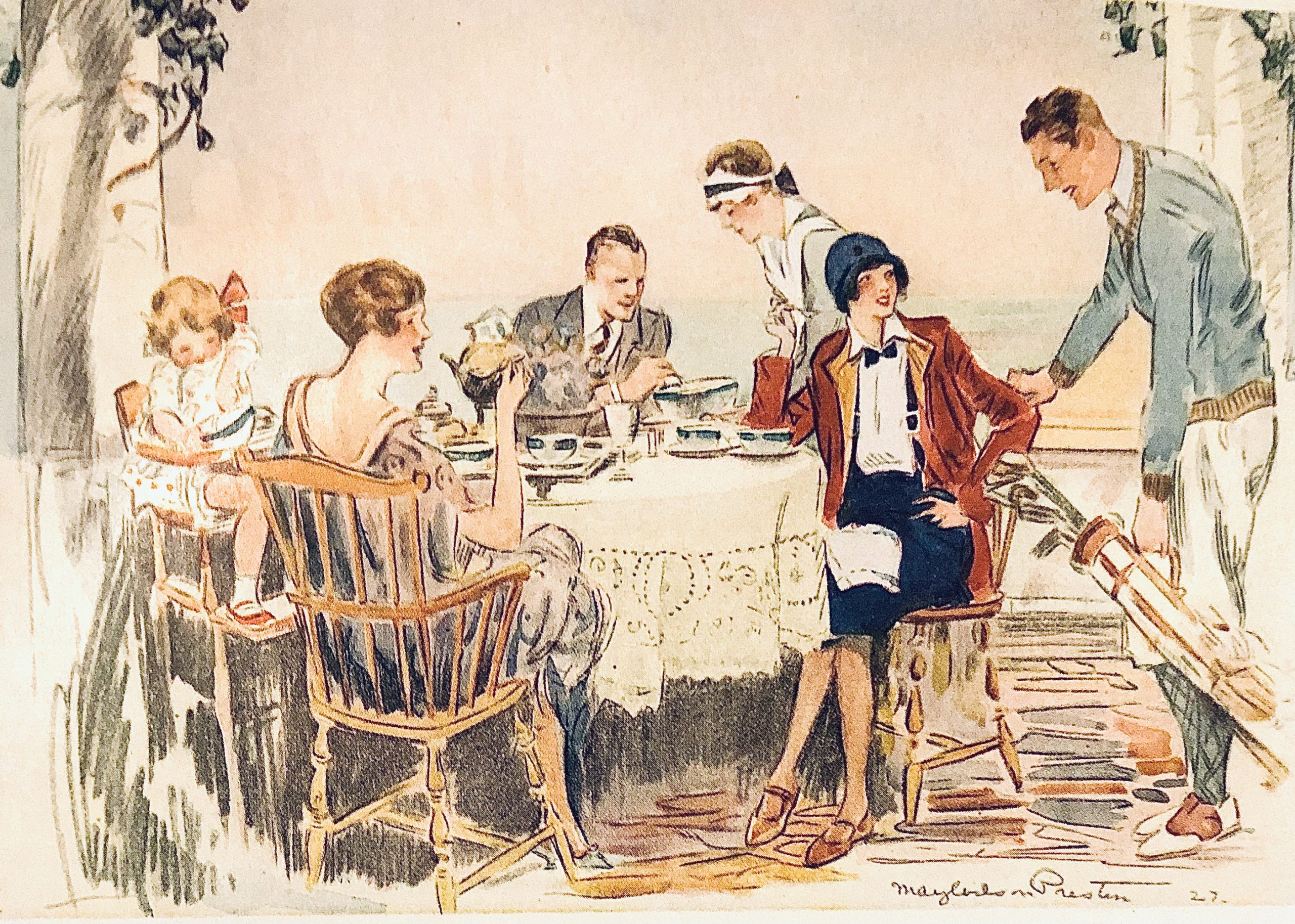Balls and Dances are very different things. In the past, when sending out invitations to a ball, you sent them to friends and family, no matter what their age. Balls are social events with dancing, but not everyone is expected to dance and the hosts are expected to provide a meal.
Dances as we know them are a newer invention, until the twenties, when you see a reference to a dance in an etiquette guide, they will be referring to a Ball, the difference at that time being the size of the crowd.
“Any number over a hundred guests constitutes a “large ball” under fifty it is merely a “dance”.”
Decorum, (1880)
“The Difference between a dance and a ball consists in the number of the invitations issues, in the strength of the band, and the extent of the supper arrangements.”
Manners & Rules of Good Society by A Member of the Aristocracy, (1906)
Around the 1910’s, these distinctions separated further and by the 1950’s they became wholly different beasts.
Until the young had co-education and the freedom to entertain only themselves, (with a chaperone or two) young people of opposite sex never entertained each other without family and neighbors watching, but with the advent of teen culture, the “dance” became a way for the young to co-mingle.
20th century dances are meant for limited age groups, (think of your Prom). What that means is that you’ll either invite all tweens, teens or adults. These rules are often broken when not tied to proms or school dances in our modern world. But the most important difference is that at a dance, everyone who attends is expected to cut a rug. There are no required meals at dances, though light refreshments, such as punch and cookies, are.

Private balls are a thing of the past, mostly relegated to charity events, public events, (like those in Venice and Vienna) or debutante balls. During the heyday of the private ball in Regency and Victorian eras, private balls were the responsibility of the hostess and the buck stopped with her.
A public ball would likely be run by a committee and the chairman or chairwoman would be considered to be like the hostess. Committee members would each take responsibility for individual aspects of the ball such as invitations, decorations, orchestra, food, tickets, etc. Formally, no one at a public ball is called a host or hostess, just chairwoman/man and committee members.
Dances usually have a school, university or corporate sponsor. School dances are run by committee and will have student committees that run the décor, music and themes and an administrative committee with teachers and administrators that take care of chaperoning, location and paying for everything.
A very important difference between a ball or dance is also in the space requirements. Dances only require a room large enough for dancing and a table with refreshments, (and access to a bathroom). A ball requires a ballroom, lounges and a dining room. Balls also require an awning and a red carpet down the front steps or walk. I suppose this is why they are in short supply now.
Dances do not require invitations at all. Indeed, there may just be a flyer placed on a school bulletin board with instructions on how to buy tickets. Some schools and universities send emails. All of this is perfectly acceptable.
Balls always require formal invitations, but dances can be formal to totally informal. Within the modern conventions of formal invitations, there is a wide range of invitations that one can choose from, and charity balls can be pretty loose with their interpretation of “formal”. Snobs will require formal snail mail invitations to a ball and you know what? I agree. A ball is a fantasy, don’t ruin it with emailed invitations. Engraved or printed is perfectly fine. Engraved invitations, where you filled in the name of the guest by hand, were the norm even in Jane Austen’s time. Just put a stamp on it.
I do disagree with snobs that formal invitations should only be cardstock, letter style invitations. I’ve seen charity ball invitations that came as messages in a bottle or on rolled up parchment paper. So long as they’re in keeping with the theme of the evening and lend to the aura of fantasy and romance, I say do it. The snobs live to sneer.
As Balls moved from the home to a public venue, it became customary to send an engraved or printed entrance card once a guest had RSVP’d. This was to keep the guests in and the riff raff out. Most Balls still do this today, though a few will send sad looking tickets. Dances will have tickets.
Another odd difference is that while dances usually are like nightclubs and are desperate for girls to attend, (as they will attract boys) balls are the other way around. Men who know how to comport themselves at a ball, much less are able partner-dancers, have always been thin on the ground, so are highly prized and will never be turned away. Attempting to bring a plus one to a ball that is of the feminine persuasion used to make you the most hated guest by your hostess or committee in days gone by.

Lastly, both public dances and balls used to give out dance cards to the ladies in attendance, (there were never dance cards at private balls). These were tiny paper pamphlets with a list of dances and a space to add the name of a partner. Men would ask for a specific dance and then show up when the appointed song was played. There were rules about how many dances any one man could ask for and how or if a woman could refuse a dance. Almost no one uses these today. At a dance, they would be completely useless now as everyone just jumps onto the dance floor and goes to town in one great mass. Dance Cards also meant the music must be set in advance, though only the style of dance, i.e. Fox trot, waltz, etc. needed to be noted. Lastly, it meant that people knew how to dance specific styles of dancing, I don’t think this has been true since the disco era. And so, dance cards said “au revoir”.
Dance cards were especially used at dances and balls given at colleges and universities. This made sure that men and women were able to meet a broad group of people and no one was left out.
I must admit that for balls, I’m sad that dance cards are no longer used. One of the problems with modern day balls is that people generally only dance with the person they came with. In the past, people danced with multiple partners. Years ago, I dated a ballroom dancer and he took me to a reenactment ball. Any girl that didn’t come with a partner didn’t really get to dance. I was happy to lend him out and it made me the most popular girl in the room, but it would have been nice if each girl had a way of knowing she would get to dance with willing partners at the beginning of the evening.
If you’ve ever gone to a Swing Dance event, one of the loveliest things about them is that everyone dances with everyone. In this sense, these dances are the closest thing you’ll experience to an old-fashioned ball. This is a wonderful bit of etiquette that I was thrilled to see had made a comeback and I think it’s one of the reasons the Swing Dancing community is so warm and joyful.
So, now you know what you’re attending. I didn’t include clubs, discos or raves here as they are a completely different beast. Hopefully you’ll be invited out soon and I hope to see you there! Much love, Cheri



